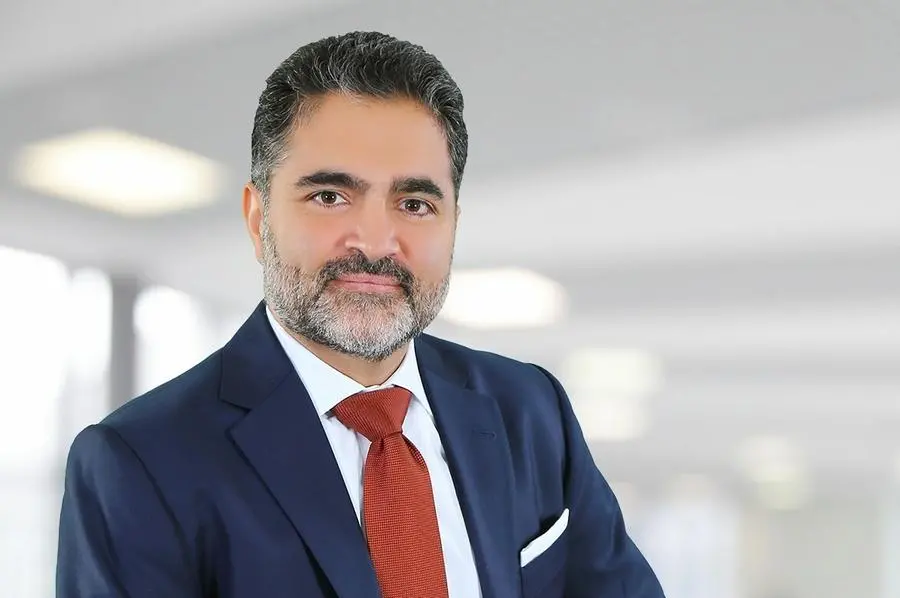PHOTO
A nurse fills a syringe with malaria vaccine before administering it to an infant at the Lumumba Sub-County hospital in Kisumu, Kenya, July 1, 2022. REUTERS/Baz Ratner
Olugbenga Mokuolu is a professor of paediatrics at the University of Ilorin Teaching Hospital and the current Strategic Adviser to the Honourable Ministers of Health on Malaria Elimination in Nigeria. In this interview with SADE OGUNTOLA, she discusses the critical information Nigerians should be aware of regarding the malaria vaccine and its implementation in the country.
WHAT is the malaria situation, and who is most at risk?
Speaking about the country, we are preparing to conduct a new round of surveys sometime next year to determine the current status of malaria in Nigeria. However, based on the last general survey in 2021 and the 2023 World Malaria Report, it is estimated that about 68 million malaria cases currently occur in Nigeria.
In addition, from the last malaria indicator survey, we found a prevalence of 22% among children less than 5 years old in the country. That figure will be different for older children and adults carrying the parasite. However, our data is beginning to show that, to a considerable extent, there is also a significant occurrence in children above five. This is not unexpected because we think the country’s overall malaria situation is gradually shrinking. Part of what one expects is this type of change in the at-risk population. The third category of people most at risk of malaria is pregnant women.
What advantages does Nigeria stand to gain as malaria vaccination commences in the country?
It is the same reason vaccines are given for any condition. It is to prevent that condition from occurring or limit its severity if it should happen. So, the malaria vaccine is an added tool for fighting malaria. It’s long been established since 1998 that no single intervention will be sufficient to eliminate malaria. Malaria is a complex disease, and the vaccine adds to our capacity to fight against malaria. It holds unique advantages in that it further improves access to the malaria intervention tool and, in a way, addresses equity issues. If there are more options, then the likelihood that a child will at least encounter one of the options is higher.
Furthermore, by preventing the disease, reducing the number that occurs, or limiting the severity, the overall risk and the total burden of malaria is reduced. So, it is obviously a significant addition to the effort to fight malaria.
Additionally, it is a very cost-effective intervention that, to some extent, offers protection. In the final analysis, its protection may span around a four-year period if you look at how the vaccine is administered. In the first instance, three doses are given between the ages of five and 11 months. Depending on when you start, you give those three doses monthly. And then, you try to give the booster dose about eight months later. So, if you add all of that together, you tend to have a protection period of roughly about three years, to some extent stretching it into a fourth year.
That almost takes care of the most vulnerable period for a child under five. But it is not a solo magic. The results we get from vaccines themselves are further potentiated when all the other interventions for malaria prevention are deployed. They all work synergistically and potentiate our capacity to reduce malaria.
Lastly, we are fighting other battles against malaria regarding insecticide resistance. If we use a vaccine and prevent it, then we are circumventing the challenges that resistance poses to individuals. With malaria as the major cause of under-five mortality, a significant reduction in under-five mortality is possible because we are trying to accelerate the reduction in malaria burden.
What age range are we going to vaccinate now?
In this first rollout, the malaria vaccine is for children aged five to eleven months. That is the group that we are recruiting. So, depending on when the child presents in that age range, they will take monthly doses for three doses and a booster dose about eight months later.
Malaria vaccine implementation has started, and we have delivered a million doses. Each child will require four doses. That translates into 250,000 children. To deploy it, we looked at the pattern of malaria transmission across the country and the burden of the disease in the population so that we could administer these million doses strategically. We wanted a situation where the selected population would fit the current vaccine availability. Also, the area where we are to administer these doses of malaria vaccine is well designated; that will make it easier for us to expand the vaccine coverage or scale it up to other areas without many challenges.
We have a perennial transmission down south and a seasonal transmission up north. Based on the chosen variables, Bayelsa and Kebbi states are the initial states where it is currently deployed.
Kebbi state has the highest malaria prevalence in the north, and its transmission is seasonal. In contrast, Bayelsa state in the southern part of Nigeria has a perennial transmission area and a modest malaria prevalence. As part of the routine immunisation schedule, the target age range is children aged 5 months to 11 months. Ultimately, this will extend to children under 2 years because of the booster dose that we will still give. The entry point for them is children aged 5 months to 11 months.
Is it contraindicated in any group of children?
We are currently taking pragmatic actions regarding the focused age group, and they align with Nigeria’s National Malaria Elimination Programme, which envisions a malaria-free future for the country. It’s not because the malaria vaccine is contraindicated in any way or among age groups. Even an adult can get a vaccine. However, the data we have for now is limited mainly to children. The age groups we have chosen are the most vulnerable and strategically appropriate for administering the vaccine. So those are our guiding principles. There are no contraindications. Malaria vaccine is safe.
How does this vaccine work? And how effective is this vaccine?
Talking about how it works is trying to explain a complex process. But in simple terms, we have three potential areas where vaccines can work along the continuum of the malaria life cycle. We have the liver stage, also known as the anti-infection or pre-erythrocytic vaccines. We have potential vaccines that can act when the parasite is in the red blood cells. They are called blood-stage vaccines. And then we have vaccines that can work as transmission blockers. They have something to do with the ability of the mosquito to transmit to man. Regarding research and vaccine development, the liver stage is the most advanced area of vaccine development for malaria. Both the RTS, S vaccine, and the R21 vaccine (which Nigeria has adopted and is currently deploying) work at that liver stage. The R21 vaccine is the second malaria vaccine recommended by the WHO in December 2023.
Essentially, RTS, S, and R21 vaccines are proteins peculiar to the malaria parasite. Through the vaccine, you can mimic these proteins. This stimulates the production of antibodies so that when the parasite comes into the body system at any point, these antibodies are already there, waiting to launch an attack, preventing the parasite from establishing itself. That’s the simple way I can explain it for now. There are more complex explanations.
How about its effectiveness?
Our data shows some cumulative 77% effectiveness in reducing malaria and preventing malaria death. So, it is not 100% foolproof. However, considering its benefits in terms of the malaria burden and its usefulness in decreasing the new population of malaria by as much as 70 percent, it translates into a very significant impact. It is cost-effective. It is not 100% effective. However, the contribution that it provides is substantial.
What other information would you like to pass to Nigerians about the malaria vaccine implementation programme?
The malaria vaccine is a multi-dose vaccine, and when people start, we encourage them to have return visits for the other doses. It is not a single-dose vaccine. They must complete all four doses. The effectiveness of the vaccine is dependent on these multiple doses. Furthermore, using the vaccine is not meant to preclude other forms of intervention, such as using nets and testing the person with a fever before administering treatment. So, all other preventive interventions should still be adhered to because the vaccine is not supposed to be a substitute for them. It should be layered on top of those issues.
Finally, the vaccine is safe. It has taken over 50 years of development to get to where we are. If the scientific world were not meticulous, it would not have taken them this long to get to where we are. Available data shows that the vaccine is safe, and there should not be any room for an infodemic, raising unverified alarms on the use of the vaccine. We have just a million doses currently. We want to appeal to the government and other partners in the vaccine space to contribute to funding the malaria vaccine so that more vaccine doses can be available. New partners, I believe, are welcome, too.
READ ALSO: FG receives 846,000 doses of malaria vaccine, targets 13% percent reduction
Get real-time news updates from Tribune Online! Follow us on WhatsApp for breaking news, exclusive stories and interviews, and much more. Join our WhatsApp Channel now
Tags: malariaNigeriavaccine Copyright © 2022 Nigerian Tribune Provided by SyndiGate Media Inc. (Syndigate.info).
by Sade Oguntola






















